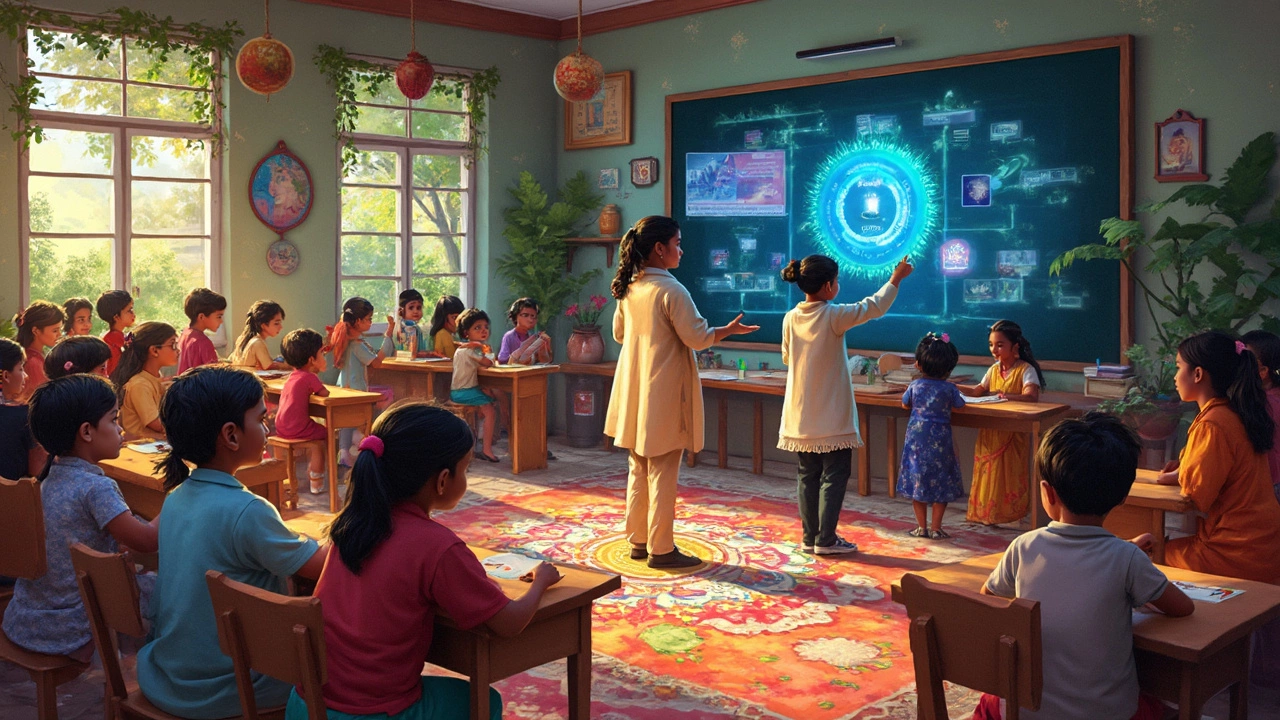So, you're thinking about diving into the world of e-learning but have no clue where to start? Don’t worry, you're definitely not alone, and setting up an online learning space isn't as mind-boggling as it might seem at first. The digital wave has hit education big time, making it easier than ever to create an engaging and accessible learning environment online.
First things first, you've got to pick the right platform. Consider this your home base. Whether it’s Zoom for live classes, Moodle for a more structured setup, or Google Classroom for user-friendliness, choose a platform that matches your teaching style and meets your students' needs. Remember, the right tech can make or break your virtual classroom.
- Choosing the Right Platform
- Getting Your Gear in Order
- Creating Engaging Content
- Keeping Students Hooked Online
Choosing the Right Platform
Picking the perfect e-learning platform is like finding the right shoes—you need something that fits well and makes the journey smoother. Your choice will depend on a few key factors: usability, features, and what your students are comfortable using.
Here's what you gotta consider:
- Ease of Use: You don’t want to spend ages just figuring out how to use the platform. Platforms like Google Classroom are known for their straightforward and intuitive interface, making it a hit among educators and students.
- Features: Different platforms offer different tools. For live interactions, Zoom is unbeatable with its breakout rooms and screen sharing capabilities. On the other hand, Moodle provides a more customizable experience if you need complex course structures.
- Integration: The ability to integrate other tools like Google Drive or Dropbox can be a game-changer. Look for platforms that allow seamless integration to avoid the hassle of switching between apps.
Ever wondered how many educators have jumped on the online education bandwagon? A recent survey showed that over 70% of schools in the U.S. have incorporated some form of digital learning platform post-2020. That says a lot about the trend and how vital these platforms have become.
Once you narrow down your choices, take full advantage of free trials or demo classes. Trying before you commit ensures that you and your students will actually enjoy the digital classroom setup. There’s no one-size-fits-all answer, but with a bit of research, you'll find the platform that feels just right.
Getting Your Gear in Order
The beauty of e-learning is that you don’t need a spaceship to get started, but having the right gear can make a world of difference. Imagine trying to chop vegetables with a spoon. Not fun, right? The same logic applies here.
First up, your trusty computer or laptop. It doesn't have to be a top-of-the-line model, but make sure it’s reliable, with a decent processor and enough RAM to handle video calls and multiple tabs. A good rule of thumb is 8GB RAM, which keeps things smooth without emptying your wallet.
Next, invest in a quality microphone. Your voice shouldn’t sound like you’re speaking through a shoe. USB mics are super easy to set up and give you crystal-clear audio, which is crucial in keeping your students engaged.
While we're on sound, don’t ignore your headset. A comfy pair with good sound quality ensures you stay focused during long sessions without the distraction of annoying echoes or background noise.
For video, a basic HD webcam will do. But hey, if your laptop camera’s up to snuff, feel free to use that instead. The goal is to be seen clearly, not necessarily in Hollywood detail.
Maintain steady Wi-Fi with at least 10 Mbps download speed. You don’t want to be the teacher who keeps freezing mid-sentence, right? Consider using an ethernet cable for a more stable connection. If you want to go nuts, here's a quick table to give you an idea of internet speed requirements:
| Activity | Speed (Mbps) |
|---|---|
| Standard Video Call | 1-3 Mbps |
| HD Video Call | 3-8 Mbps |
| Streaming Video | 5-25 Mbps |
Now, gear doesn't just mean hardware. Don't forget software that makes it all tick. Make sure your chosen e-learning platform runs smoothly on your device. And, of course, keep your antivirus software up to date to prevent any virtual nasties from crashing the party.
There you have it, your essential shopping list to kick off a successful virtual learning journey. Armed with the right tech, you're well on your way to creating an awesome digital classroom experience.

Creating Engaging Content
Cranking out content that keeps your students glued to their screens is the real deal in the e-learning game. It's not just about throwing info at them—it's about making it stick. Let's break down how to build lessons that are both fun and effective.
Start with a mix of content types. Combining text, videos, images, and even podcasts can cater to different learning styles. For instance, while visual learners might love infographics, auditory learners could benefit from a podcast or recorded lecture. Variety isn’t just the spice of life—it’s the key to keeping online education engaging.
Next, aim for interactivity. Tools like quizzes, polls, and discussion forums can make lessons more dynamic. Kahoot! and Mentimeter are awesome for real-time quizzes, while platforms like Padlet let students contribute ideas via a shared board. This interaction not only breaks up monotony but also encourages participation and keeps brains buzzing.
Relate content to real life. Students are more likely to pay attention when they see how the lesson applies to their world. Try using current events, relatable scenarios, or case studies that fit the topic at hand. If you're discussing climate change, for example, a case study on a nearby city affected by severe weather can drive the message home.
Lastly, keep the feedback loop open. Encourage students to share what’s working for them and what’s not. This open line of communication can help you tweak and improve your digital classroom setup. After all, e-learning is a two-way street, and feedback is your best co-pilot.
Keeping Students Hooked Online
Keeping students engaged in a virtual learning environment can be quite the challenge. Unlike a traditional classroom where you can gauge the room's vibe and adapt on the fly, staring at a screen gives way less feedback. So, how do you keep their attention?
Start by making your e-learning sessions interactive. Instead of long monologues, break up your lectures with questions or polls. Platforms like Kahoot! or Quizizz can add a fun competitive element that keeps students on their toes.
Next, use a variety of media. Throw in some videos, animations, or infographics. Visual content can simplify complex topics and keep students curious. According to Dr. Cathy N. Davidson, a leading education reformist, “Engagement in learning is more about sparking curiosity than delivering information.” Online education platforms often have tools to easily integrate multimedia, so why not take full advantage of that?
“In a world drowning in information, it's not merely about giving more. It's about showing enough to leave the learner intrigued.” - Dr. Cathy N. Davidson
Consistency in your virtual classroom is also key. Regular sessions and deadlines help students develop a routine, which is crucial for maintaining focus. But that doesn’t mean sticking to a rigid plan. Flexibility goes a long way in catering to diverse student needs. Rotate between group work and individual assignments to cater to different learning preferences and promote engagement.
Here’s a quick checklist to ensure your students stay engaged:
- Break long topics into shorter, digestible sessions.
- Use interactive tools like polls and quizzes.
- Incorporate multimedia into lessons.
- Encourage discussions through online forums or chatrooms.
- Maintain a consistent schedule but remain flexible to changes.
Including these elements in your digital classroom setup can transform your e-learning experience from mundane to captivating. Remember, it's all about making students feel connected and inspired, even while they're miles apart.





Write a comment